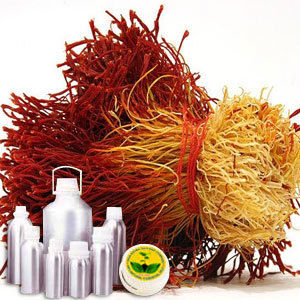Botonical Name | : | Crocus sativus | |
CAS # | : | 2216-51-5 | |
Country of Origin | : | India | |
Color & Odor | : | Yellow to redish liquid with Middle Woody, spicy smell similar to that of hay like odor | |
Solubility | : | Insoluble in water, soluble in alcohol and fixed oils. | |
Specific Gravity | : | 0.9100 - 0.9150 @ 25°C | |
Optical Rotation | : | +5 to +10 | |
Refractive Index | : | 1.4760 -1.4800 @ 20 °C | |
Flash Point | : | 65°C | |
Plant Part Used | : | Flowers | |
Extraction Method | : | Steam Distillation |
DESCRIPTION:
Saffron is known to be one of the most expensive spices. This is because the stigmas of the plant are handpicked to make the spice. Saffron oil has a very interesting odour. It has a woody, spicy, hay like odour.CONSTITUENTS:
Saffron contains the carotenoids crocin and crocetin, which are responsible for the reddish orange color of the stigmas. The stigmas also contain the aromatic essential oil safranal. Other constituents of saffron are cineol and pinene, as well as the substance picrocrocin (saffron bitters). Saffron is also high in thiamine and riboflavin.AROMATIC SUMMARY / NOTE / STRENGTH OF AROMA:
Woody ,Spicy Smell Similar to that of hay.BLENDS WITH:
It is only partially soluble in alcohol and fixed/carrier oils.COMMON NAMES:
Safflower , American saffron , zafran , bastard saffron , false saffron , dyer's saffron , Gami Honghwain .USES:
Saffron oil is used for external application in uterine sores. Remanent water after extracting oil from it is also used as medicine


































